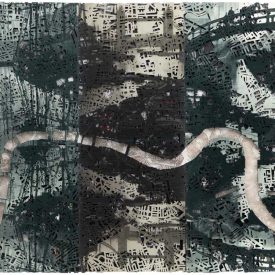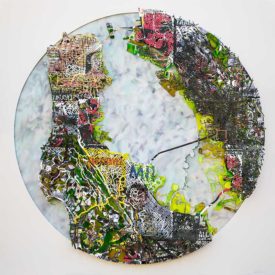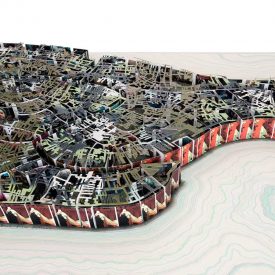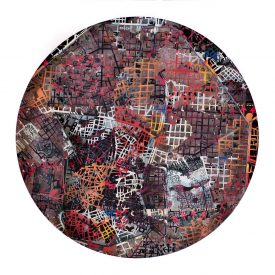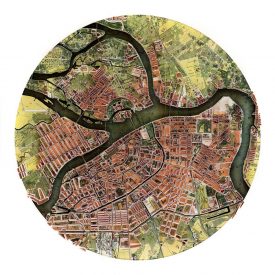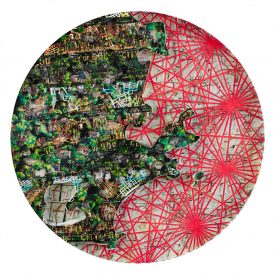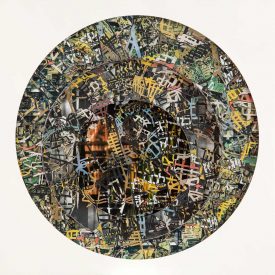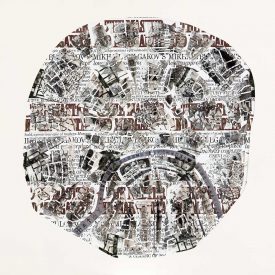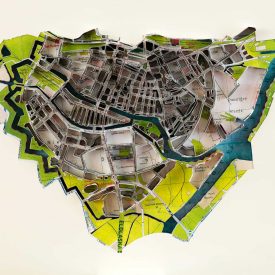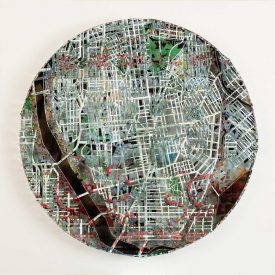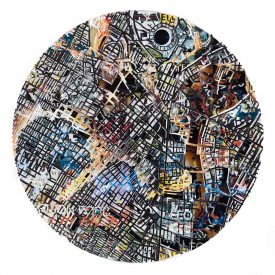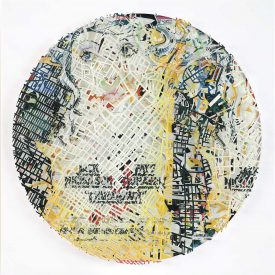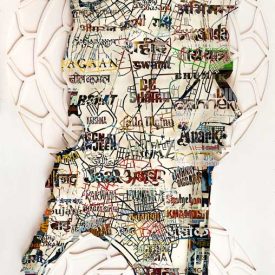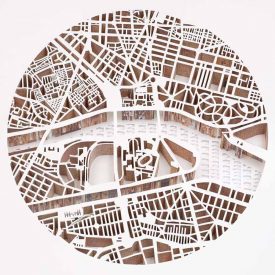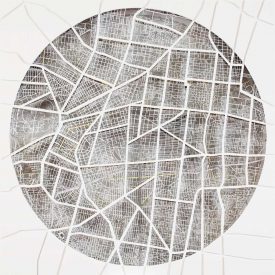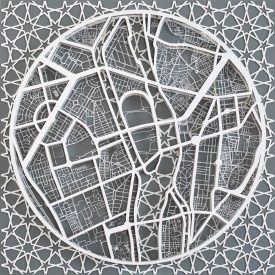Bombay was renamed Mumbai, after the Hindu Goddess Mumbadevi in 1995, the year that the Hindu nationalist party Shiv Sena won the elections in the state of Maharashta. This was not a name that had any historical precedence for Bombay, it was done more to reflect a desire to stamp a Hindu identity upon the city. However much of the city has a muslim religion and still refers to it as Bombay. The chronicle of the riots and battles of 1993 between the Hindus and Muslims is recounted and explored in the book by Suketu Mehta, “Maximum city, Bombay lost and found”. Some extracts from this book relating to the changing nature of society in Bombay line the geographic edge of the peninsular in the sculpture.
In walking through Mumbai one becomes aware of the many thousands of Hindu shrines situated inside the trees and amidst the branches. Some of the temples have tiled facades depicting the Hindu deities. Depictions of the deities Shiva, Durga, Vishnu, Krishna, Lakshmi and Ganesh from these tiles appear in the sculpture from underneath the white paper that has been cut through with the Bollywood film titles. There are also images of the Islamic flag appearing here too, these flags, often confused with the Pakistani flag can be seen flying over some of the slums in Bombay.
The street maps of Mumbai has been cut from images of the Bollywood film posters, the films themselves so much a part of the fabric of Indian popular culture. The film stars personalities emulate the Deities in a condensed version. The dance styles and routines mimic the representations of the Gods. The stars themselves occupy a much loved and revered position in Indian culture.
Surrounding the form of the peninsular of Bombay in the ocean are white cut out forms of the Shri Yantra, representing the beauty of three worlds, earth, atmosphere and sky, the union of masculine and feminine divinity. This is one of the forms created for the annual Diwali festival in Mumbai. Diwali is a celebration of inner light emerging from spiritual darkness, it is an ancient Hindu festival that takes place every autumn and centers on the new moon. The night of Diwali is the day Lakshmi chooses her husband Vishnu as her husband and marries him. Prayers are typically offered to Lakshmi, goddess of prosperity, lamps are lit to symbolize the sun, cosmic giver of light and energy to all life. Outside the houses in the doorways and entrances to their homes, women and children create Rangoli patterns in bright colors to surround their homes with auspicious symbols for the year ahead.
The entire sculpture is underpinned and surrounded by the Shri Yantra, which is perhaps the most meaningful symbol of all.
